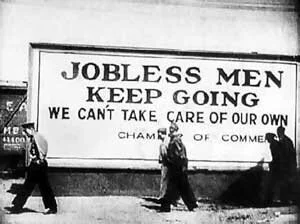13.3% Unemployed
The Bureau of Labor and Statistics (BLS) announced that the May unemployment rate had dropped from April’s 14.7% to 13.3% by adding 2.5 million jobs.
However, they amended the document to say that the unemployment rate is probably higher because of a mistake. They wrote on page 6,
“In the household survey, individuals are classified as employed, unemployed, or not in the labor force based on their answers to a series of questions about their activities during the survey reference week (May 10th through May 16th). Workers who indicate they were not working during the entire survey reference week and expect to be recalled to their jobs should be classified as unemployed on temporary layoff. In May, a large number of persons were classified as unemployed on temporary layoff.
However, there was also a large number of workers who were classified as employed but absent from work. As was the case in March and April, household survey interviewers were instructed to classify employed persons absent from work due to coronavirus related business closures as unemployed on temporary layoff. However, it is apparent that not all such workers were so classified. BLS and the Census Bureau are investigating why this misclassification error continues to occur and are taking additional steps to address the issue.
If the workers who were recorded as employed but absent from work due to ‘other reasons’ (over and above the number absent for other reasons in a typical May) had been classified as unemployed on temporary layoff, the overall unemployment rate would have been about 3 percentage points higher than reported (on a not seasonally adjusted basis). However, according to usual practice, the data from the household survey are accepted as recorded. To maintain data integrity, no ad hoc actions are taken to reclassify survey responses.”[1]
They had previously announced that the unemployment rate for April could be 5% higher than the 14.7% whence the unemployment rate just fell.[2] On page 3 of the April report they wrote,
“If the workers who were recorded as employed but absent from work due to ‘other reasons’ (over and above the number absent for other reasons in a typical April) had been classified as unemployed on temporary layoff, the overall unemployment rate would have been almost 5 percentage points higher than reported (on a not seasonally adjusted basis).”[3]
So the unemployment rate could be closer to 20% by the BLS’s own admission.
As long as people can be given “free” money from the government, they can sit at home and be counted anyway they like. The Fed is printing money and buying bonds to finance the welfare state at a historic rate.[4]
However, at some point printing money stops working.
“We can guarantee cash benefits as far out and at whatever size you like, but we cannot guarantee their purchasing power.” -Fed Chairman Alan Greenspan, US Senate Committee on Banking, Housing and Urban Affairs, Feb 16, 2005.
[1] https://www.bls.gov/news.release/pdf/empsit.pdf
[2]https://www.hamiltonmobley.com/blog/acmk2rkdvf4w83tjmxh61hwfbsiyxh
[3] https://www.bls.gov/news.release/pdf/laus.pdf
[4]https://www.hamiltonmobley.com/blog/6hc77l5rzp81iawadkxb09difpcyuf



